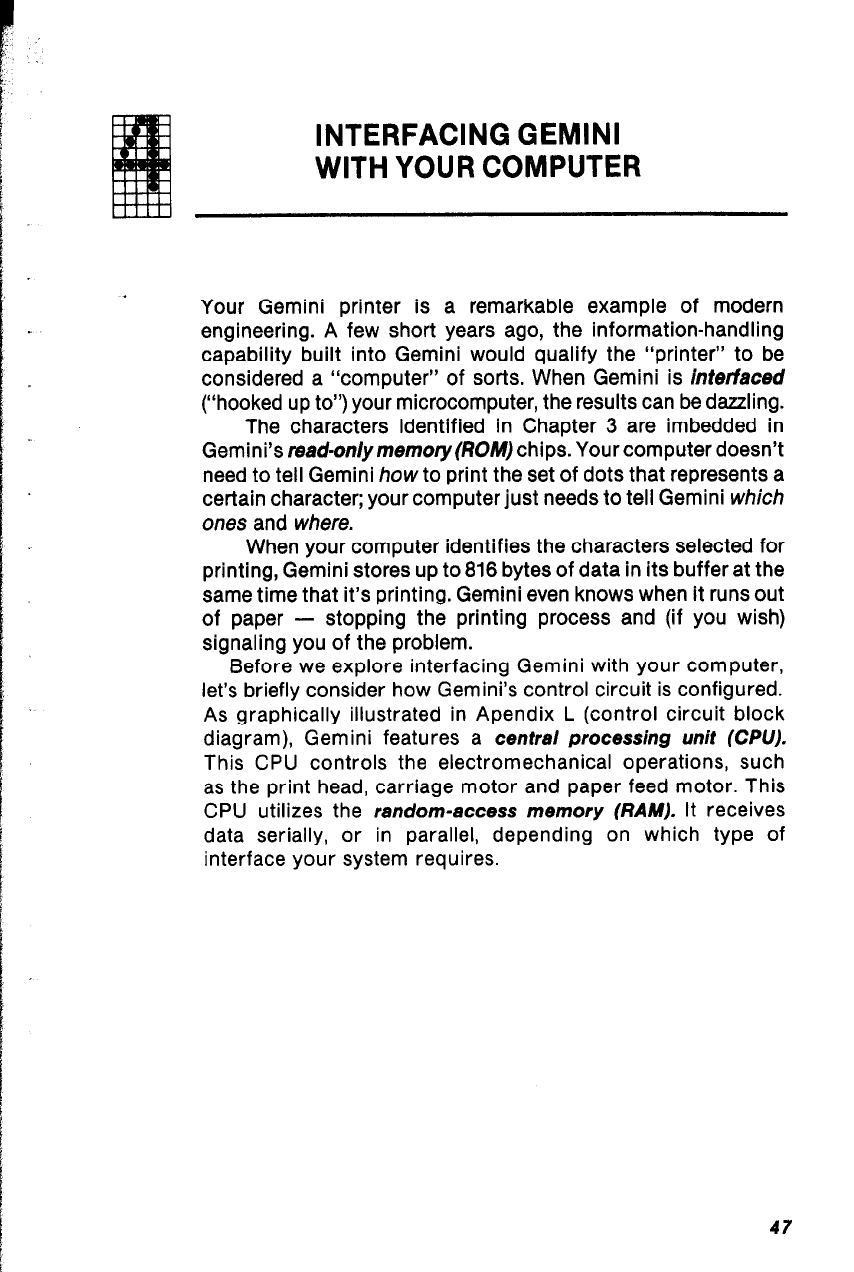
INTERFACING GEMINI
WITH YOUR COMPUTER
Your Gemini printer is a remarkable example of modern
engineering. A few short years ago, the information-handling
capability built into Gemini would qualify the “printer” to be
considered a “computer” of sorts. When Gemini is interfaced
(“hooked up to”) your microcomputer, the results can be dazzling.
The characters identified in Chapter 3 are imbedded in
Gemini’s mad-on/ymemory(ROM’chips. Your computer doesn’t
need to tell Gemini how to print the set of dots that represents a
certain character; your computer just needs to tell Gemini which
ones and where.
When your computer identifies the characters selected for
printing, Gemini stores up to 816 bytes of data in its buffer at the
same time that it’s printing. Gemini even knows when it runs out
of paper -
stopping the printing process and (if you wish)
signaling you of the problem.
Before we explore interfacing Gemini with your computer,
let’s briefly consider how Gemini’s control circuit is configured.
As graphically illustrated in Apendix L (control circuit block
diagram), Gemini features a central processing unit (CPU].
This CPU controls the electromechanical operations, such
as the print head, carriage motor and paper feed motor. This
CPU utilizes the random-access memory (RAM). It receives
data serially, or in parallel, depending on which type of
interface your system requires.
41


















